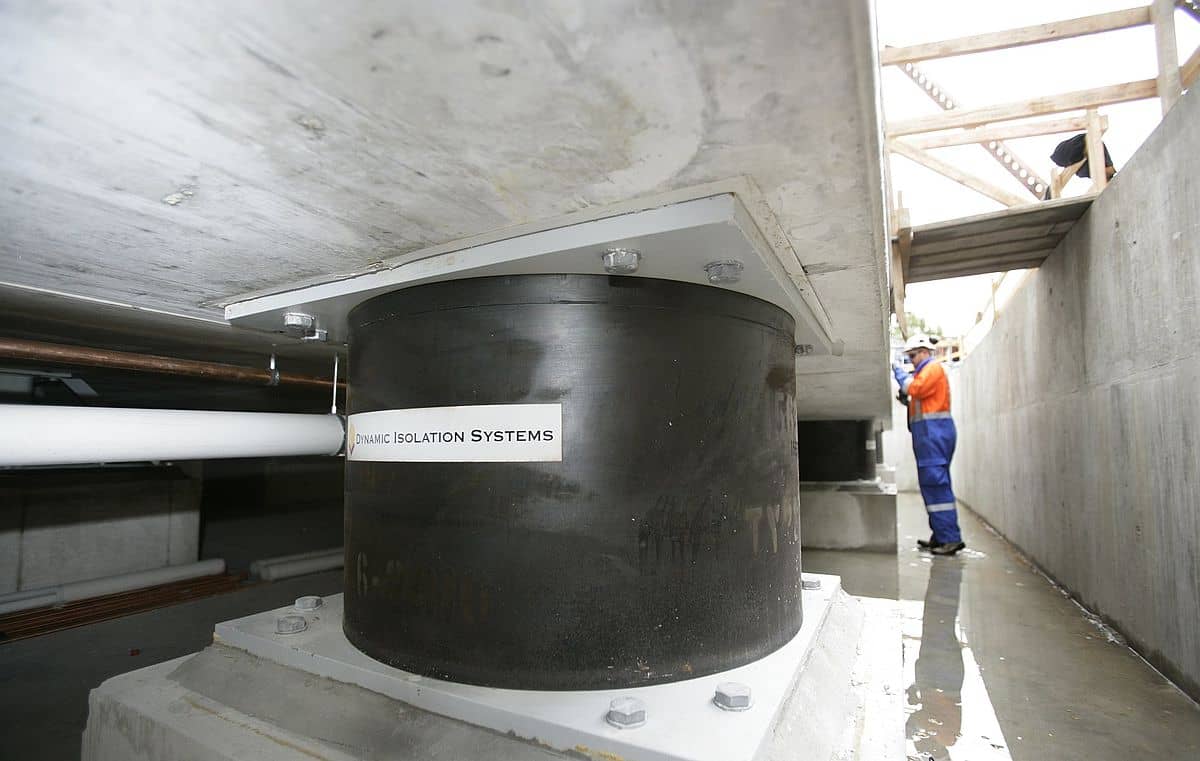The Base Isolation System (BIS) is amongst the best ways to construct a building in such a way that it is impervious to earthquakes. When the ground shakes in a quake, the foundation of a building shakes as well. That shakes the whole building with it. BIS effectively protects a building from that.
Also known as Seismic Base Isolation, BIS is a collection of construction engineering technologies to detach the foundations of a building from the ground. This means the base of the structure doesn't move even when the ground is moving.
In earthquake engineering, BIS is arguably the most powerful tool to combat seismic waves. This isolation of the foundation can be achieved by using rubber bearings, ball bearings, friction bearings, rollers, spring systems, hydraulics etc. This dramatically increases the superstructure's seismic sustainability.

There are generally two components in a Base Isolation System
Base Isolation Units consist mostly of linear-motion bearings. They contribute most, helping the building move around in the other direction the ground is moving. Next, oil dampers or hydraulics act as shock absorbers, dampening most of the forces generated by the shock waves. When the earthquake is over, laminated rubber bearings allow the building to return to the original place.
One great thing about BIS is that it can be used for not only new buildings, but also retrofit old buildings to protect them from seismic activity. Many of the prominent buildings in the USA were retrofitted with this system, because they sat on top of major fault lines. The Los Angeles City Hall is the world's tallest building of this kind.
Another good thing about the Base Isolation System is that it can be used on any scale. Generally, you can use the technology to isolate a whole megastructure from the ground. The main building of the Sabiha G?k?en International Airport is a great example of this.
But also, you can base-isolate a single room, or even less, from the rest of the structure this way. If the room contains especially sensitive equipment or artifacts, you may need this. A great example of this is the Museum of Western Arts in Tokyo, which sits in one of the most earthquake-prone populated areas, and where valuable statues and sculptures are base-isolated.
Base Isolation Systems greatly increases a building's survivability. It is also one of the easiest anti-seismic engineering technologies to implement. That is why you will find BIS in use quite often in earthquake prone areas. However, we should remember that BIS can never make a building 100% earthquake proof, especially against very strong attacks. We need to use other technologies in combination for that.